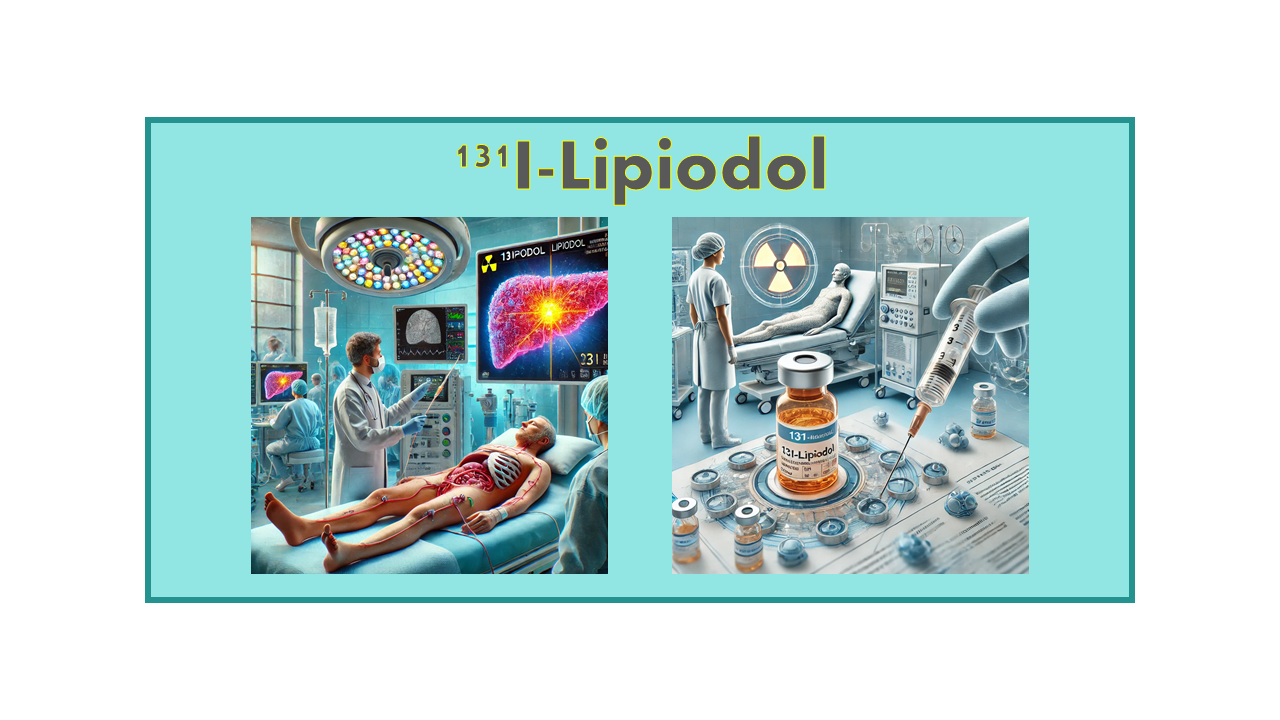
131I-Lipiodol
December 25, 2024
Description
131I-Lipiodol, also known as 131I-Ethiodized Oil or 131I-IOM-40, is a generic therapeutic agent that was first authorized and made available in 1995 by CISbio/IBA Molecular under the brand name Lipiocis®. Lipiodol itself is a mixture of iodinated ethyl esters derived from the fatty acids of poppy seed oil. Originally developed and sold by Guerbet, it is widely utilized as a contrast agent in radiology. When labeled with radioactive iodine-131 (131I), Lipiodol becomes a therapeutic agent specifically used for the treatment of hepatocellular carcinoma (HCC).
The product was withdrawn from the market in October 2010 after reports of lung toxicity emerged. However, it re-entered the Indian market in 2018 following its approval in March 2017, backed by the Bhabha Atomic Research Center (BARC) in India.
Clinical Applications
131I-Lipiodol is indicated for the treatment of hepatocellular carcinoma (HCC), particularly in patients with portal vein thrombosis and in cases where the disease is deemed non-resectable or unsuitable for transplantation.
Availability
After its withdrawal from the European market, 131I-Lipiodol became available again in 2018, primarily through BRIT/BARC in India under the name IOM-40. In Brazil, it remains listed in the IPEN catalog, although it does not carry marketing authorization (MA).
For research purposes, some institutions prepare 131I-Lipiodol by radiolabeling existing Lipiodol from Guerbet with iodine-131 at their radiopharmacies.
In India, patient doses of 75 mCi are priced at INR 40,000 (approximately EUR 500 or USD 550). This makes it one of the most affordable radiotherapeutic options globally, second only to 131I-Sodium Iodide used for thyroid cancer treatment.
Competition
Several analogues of 131I-Lipiodol are under slow development, utilizing alternative radionuclides such as rhenium-188 (188Re) and lutetium-177 (177Lu). Notably, 131I-Lipiodol represents a cost-effective alternative to microsphere-based brachytherapy technologies, which are employed for similar indications but are prohibitively expensive. Examples of these technologies include 90Y-SIR-Spheres, 90Y-TheraSpheres, and 166Ho-QuiremSpheres.
In India, microsphere products are not readily available due to their high costs. This economic constraint has motivated the Indian State Radiopharmaceutical Company to reintroduce 131I-Lipiodol to the market as an affordable solution. Furthermore, BRIT is actively supporting the development of 188Re-Lipiodol as a viable analogue.
Comments
131I-Lipiodol is a well-established therapeutic product that has demonstrated favorable outcomes over a significant period of time. It stands as a serious competitor to microsphere-based technologies. The initial market withdrawal was not solely due to adverse side effects such as lung toxicity but also stemmed from challenges in accessing high-quality Lipiodol.
In response to these issues, Guerbet has since taken steps to reinvest in Lipiodol production. This includes the establishment of a new production facility in the United States, aimed at enhancing the quality and ensuring the consistent availability of raw materials. This development is expected to secure the future supply of Lipiodol for use in 131I-Lipiodol and the emerging 188Re-Lipiodol.
By addressing previous shortcomings and fostering innovation in radiopharmaceutical applications, 131I-Lipiodol continues to hold promise as an accessible and effective treatment option for hepatocellular carcinoma in resource-limited settings.